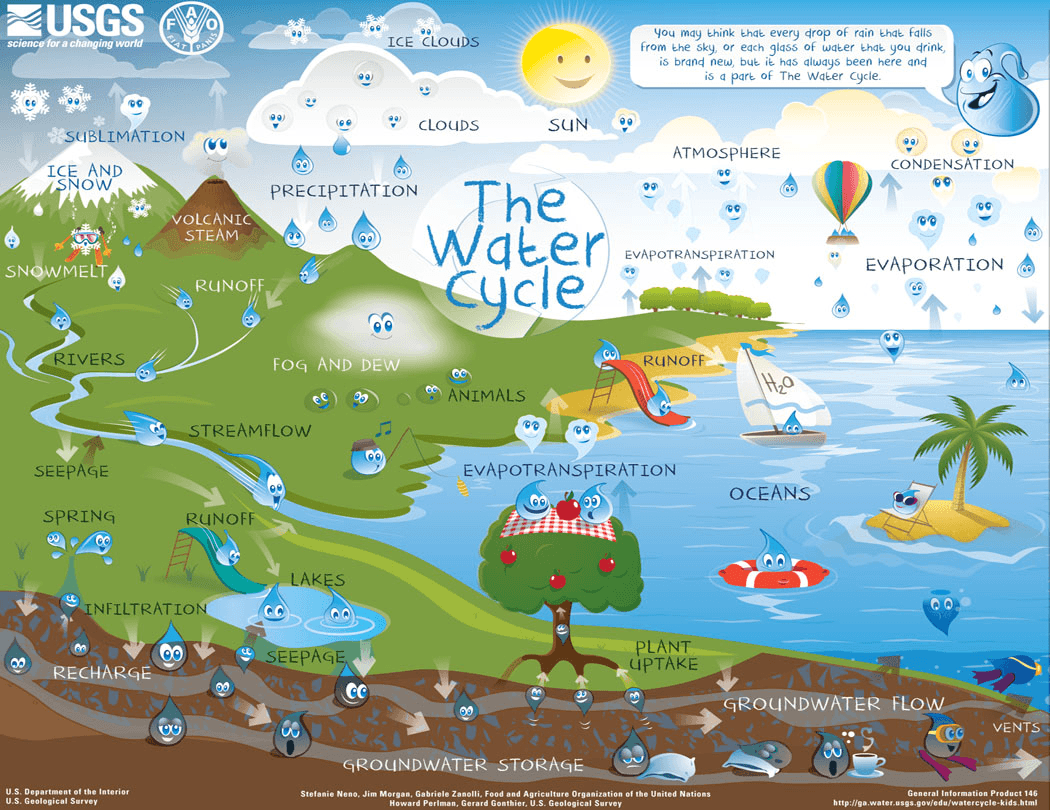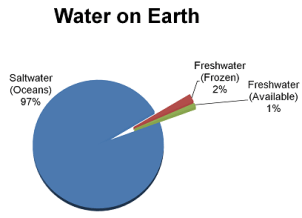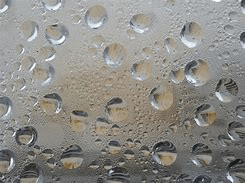These are the three most common states of matter.
What are solids, liquids, and gases?
All the water on Earth is the same water that was always on Earth. The water you drank this morning might have been the same water that rained on a dinosaur or froze in a glacier. It is never used up; it just keeps circling around the Earth, going in and out of animals, plants, oceans, air, and land. The movement of water around the Earth is called this.
What is the water cycle?
A NUTRIENT is a substance that supplies nourishment for an organism so that it can grow and stay alive. Human beings need 6 nutrients. Name one.
When animals breathe, they take in oxygen and let out this gas.
What is carbon dioxide?
Bears take in gases, liquids, and solids from the environment and also let out gases, liquids, and solids back into the environment. This is the gas that bears take in from their environment.
What is oxygen?
In this model of liquid water, each blue circle represents one of these.
What is a molecule?

This graph from Michigan Water Steward Program shows that most of the water on Earth is found in these.
What are oceans?
Plants get nutritions such as nitrogen and phosphorus from the soil. They suck them up through this part of the plant.
What are the roots?
During this process, plants take in carbon dioxide (as well as sunlight and water) and let out oxygen.
What is photosynthesis?
Bears take liquid from their environment and also let liquid back out into their environment. This is the name of the liquid that bears take in from their environment.
What is water?
- has a definite shape
-has a definite volume
-molecules are very close together
Tell which state of matter this describes.
What is a solid?
When water vapor in the air comes in contact with a cold mirror, the water vapor turns into droplets of water. This process is called ____________.

What is condensation?
This diagram shows the cycle of nutrients. Nutrients are taken in by the plant. When the plant is eaten by an animal, the nutrients are passed from the plant to the animal. When plants and animals die, their nutrients are returned to the soil. Once the nutrients are in the soil again, what happens to them?
They get taken in by the plant again.
In this diagram, we see that plants take in CO2 and let out O, while animals take in O and let out CO2. This is called ______________________.
What is the exchange of gases?
Bears take in solids from their environment, such as the nutrients they get from berries. They also release solid waste back into the environment. Scientists call bear "waste" which of the following:
dung, scat, guano
dung (cow)
scat (bear)
guano (bat)
Matter is defined as anything that has MASS and takes up space. This is the tool we use to measure mass.

What is a balance?
Anne Marie notices a puddle that has been "disappearing" over time. Her friend tells her that the liquid water in the puddle has turned into water vapor (gas) because of the Sun's heat. This process is called ________________.
What is evaporation?
In this model of the nutrients cycle, which letter shows how nutrients are passed from a producer to an herbivore?
Letter A.
In this diagram of the exchange of gasses, the letter A represents this gas.
What is oxygen?
When a bear dies in the forest, the nutrients in its body will be returned to the soil as it decomposes. This is what will happen to those nutrients after they are in the soil.
They get taken in by plants again.
Which of the following is NOT true?
-Matter can not be destroyed.
-Matter can be moved or changed by energy.
-Matter cycles in an ecosystem.
-Matter gets used up by animals.
Not true: Matter gets used up by animals.
Water evaporates because of heat. When this water vapor cools, it condenses into droplets (in the clouds). Eventually it falls to the Earth as snow, sleet, hail, or rain. This last process is called ____.
What is precipitation?
Why does this diagram of the nutrient cycle have an arrow that goes from the plant to the decomposer?
To show that sometimes plants die and return nutrients to the soil (before animals eat them).
In this diagram of the exchange of gases, "respiration" is when an animal takes in oxygen and lets out carbon dioxide. This is another name for this process.
What is breathing?
Which of the following are true? *Could be more than one.
1. Matter cycles in an ecosystem.
2. Matter never gets used up (it just gets reused).
3. Matter can be in solid, liquid, or gas form.
4. Organisms take matter in from their environment and release matter back out into their environment.
They are all true!